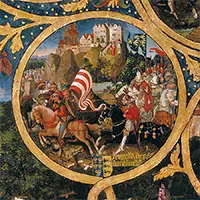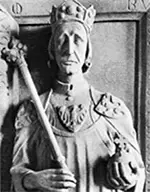The Development of Austria Before Habsburg Rule
People have lived in what is now Austria for a very long time. Archaeologists have found evidence of the Iron Age Hallstatt and La Têne cultures, out of which came a confederation of Celtic tribes known as the Noricum, after the eastern Norici tribe. The Raeti, another tribe, settled in what is now western Austria. 
As with many other peoples in Europe, the Noricum found themselves absorbed by the Roman Empire, about 15 B.C. The Danube River was a key boundary for this new Roman province. The Romans maintained the province of Raeti after absorbing it; in the east, Rome established Pannonia. The Roman capital of the former was Augusta Vindelicorum, now Augsburg; the Romans eventually divided Pannonia, creating a handful of capitals. The Romans built within these lands many cities that are still around, including these:
Shattering the relative tranquility of the Austria Romana, as later historians termed it, were a series invasions and migrations, mainly of Germanic tribes, beginning in the 4th Century. Alaric and the Visigoths arrived in 408, demanded Noricum as a concession for keeping the peace, then marched on Rome anyway, sacking it in 410. 
The Visigoths left Noricum behind, but another, far fiercer enemy arrived in the Huns, who ravaged the lands for the better part of two years in the 450s, until the death of their fearsome leader Attila, in 453. Further invaders included the Alamanni and the Ostrogoths, both of whom stayed for a time. Another successor to Rome for a time, the Lombards, stormed through in the 6th Century. 
Also coming into the picture were the Slavic tribe the Carantanians, who set up shop in the 7th Century, ruling much of what is now central and eastern Austria. That state, known as Carantania, gave way to the Germanic tribe the Bavarii and then the Franks. As the 9th Century began, what is now Austria was part of the Holy Roman Empire, courtesy of the famous Charlemagne. Straddling the advent of the 10th Century were conflicts with the Hungarians, who scored a major victory over the Bavarians at the Battle of Pressburg in 909. The German king Otto the Great (right) defeated the Hungarians in 955 at the Battle of Lechfeld. Seven years later, when Otto became Holy Roman Emperor, he made Bavaria a duchy of the Empire. 
More ebbs and flows ensued, with Leopold Count of Babenberg (left) taking control of the Bavarian Eastern March in 976 and, as Leopold the Illustrious, ruled Austria for nearly two decades. He and his successors expanded their holdings eastward, reaching Vienna in 1002. The Babenbergs solidified their realm for the next several decades and then, in 1156, Austria became a duchy and its own independent entity with the Empire. From 976, it had been a margraviate, with the ruler titled a margrave. One standout Duke of Austria was Leopold V, whose realm included parts of what is today Upper Austria, Lower Austria, and Slovenia. It was this Leopold who in 1192 had the English king Richard I imprisoned, at Dürnstein, releasing him only after Eleanor of Aquitaine had paid a huge ransom. The division of the realm into Upper Austria and Lower Austria occurred in 1238, at the hands of Duke Frederick II (known as Frederick the Quarrelsome). The River Enns formed the dividing line between the two territories. As was so common in other states, the death of a monarch without a designated heir proved problematic in Austria, as Frederick II died fighting the Hungarians at the Battle of the Leitha River in 1246 and none of his children had survived him. A power struggle ensued and was ended by King Ottokar II of Bohemia, who married the daughter of Leopold VI and then pacified the local nobles who could not agree among themselves on whom they wanted to lead them next. Ottokar it was who initiated Hofburg Palace in Vienna. 
Ottokar fashioned himself a candidate for the imperial throne and, indeed, put his name forward for it twice. His second defeat, to Rudolf of Habsburg (right), provoked him into open rebellion. Rudolf completed a series of maneuvers including marrying one of his daughters to Ottokar's son as a means of smoothing things over; this worked to a degree, but Ottokar was ultimately not satisfied, and the two sides resorted to war. The culmination of this struggle was the Battle on the Marchfeld, on Aug. 26, 1278. Rudolf achieved complete triumph, winning the battle and seeing Ottokar killed in the process. Rudolf then initiated Habsburg control over Austria. The Habsburg line would rule for centuries. |
|
Social Studies for Kids
copyright 2002–2024
David White




